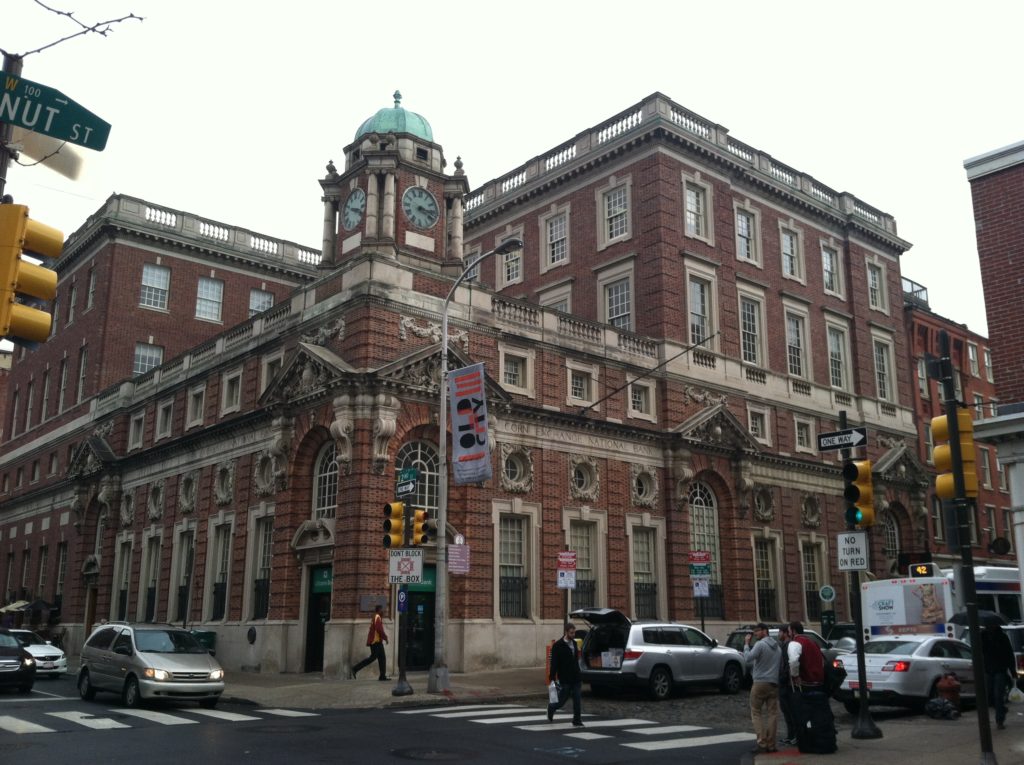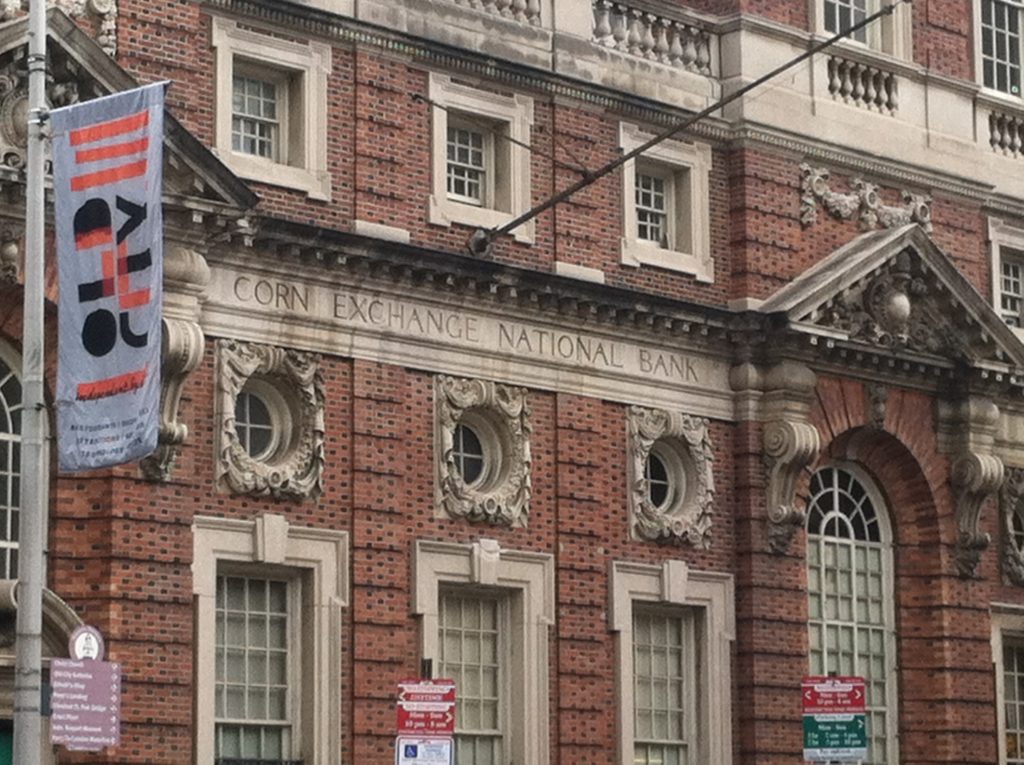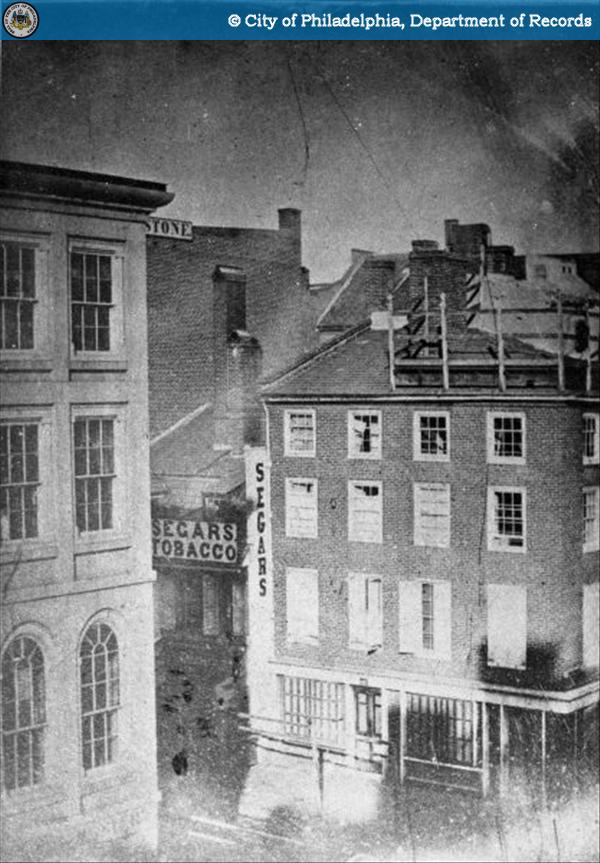Old City has been many things over the course of its history, from a haven to sailors and longshoremen to a hub for the financial sector to a destination for nightlife seekers and art lovers. Through the years, the northeast corner of 2nd & Chestnut has been reflective of all these changes. Though much of its story is dominated by a single and historically significant occupant, the site of 123-135 Chestnut St. was preceded by the two buildings shown below (and others unseen). The photo here, taken from the Athenaeum of Philadelphia, shows Segars Tobacco and an anonymous building on the corner.
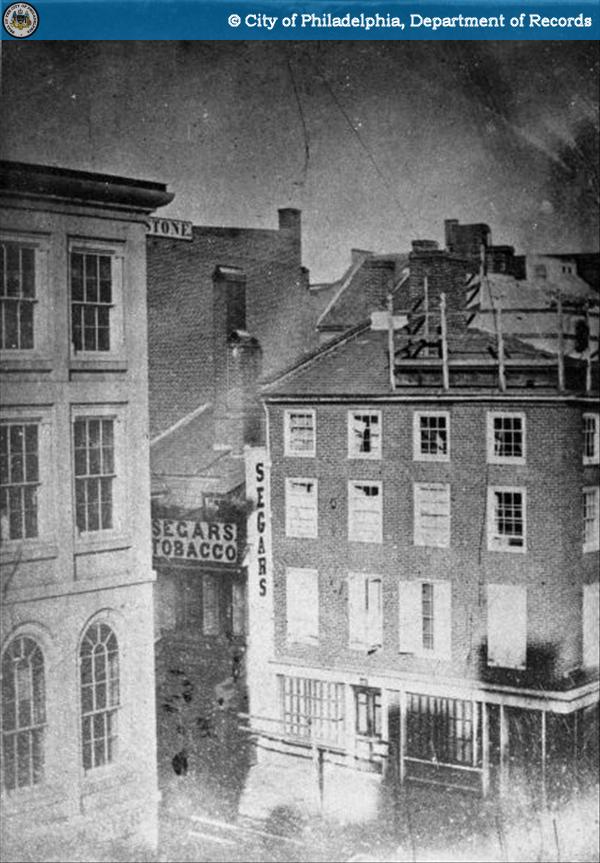
The ensuing years would bring rapid evolution in America’s banking, stock and commodities exchange sectors. Old City in particular would evidence this transformation, with many of its taverns and marine shops being replaced by grander finance industry structures. To the point, the corner shown above would be enveloped by the new Corn Exchange Bank, so named for its founding membership’s primary interest in the trade of grains and food crops. The image below, taken from Hexamer & Locher’s 1858 Philadelphia Atlas, shows the bank in the year of its opening.
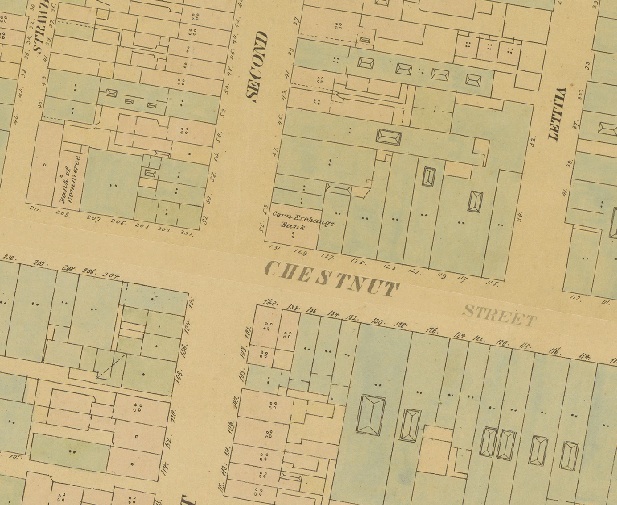
The Exchange would go on to earn its charter, according to Philadelphia Real Estate, following passage of the National Banking Act during the Civil War. At this point, it became the Corn Exchange National Bank. It would begin to assume its present day form with demolition of the original structure and the construction of a new one across 1900 and 1901. The image here below, taken from King’s Views of Philadelphia, shows the new bank headquarters as it approached completion.
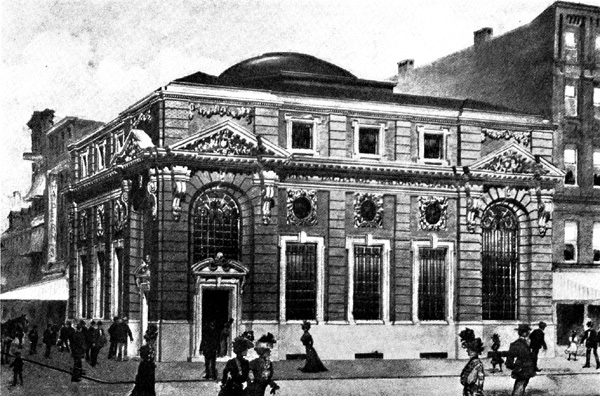
Its completion would be followed by a series of additions and renovations, including the installation of its distinguishing clock tower. And according to Wikipedia, the Corn Exchange achieved some level of unwanted notoriety when famed outlaw Willie Sutton robbed it in 1933. The bank is shown here below in a photo taken from the Department of Records following expansion, additions and an eventual sell-out to the Girard Trust Company.
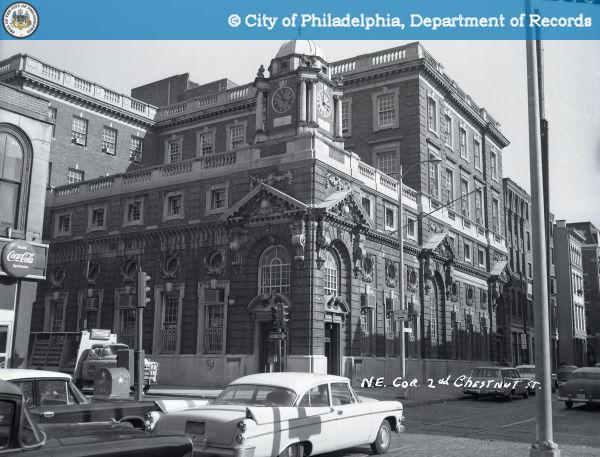
The primary occupant of the building today, Citizens Bank, is actually a direct descendent of Girard Trust Company, via Mellon Bank. As a nod to the nightlife attractions that have since come to dominate the neighborhood, the building also houses bar and restaurant The Plough and the Stars. Philadelphia City Paper is stationed here as well.
